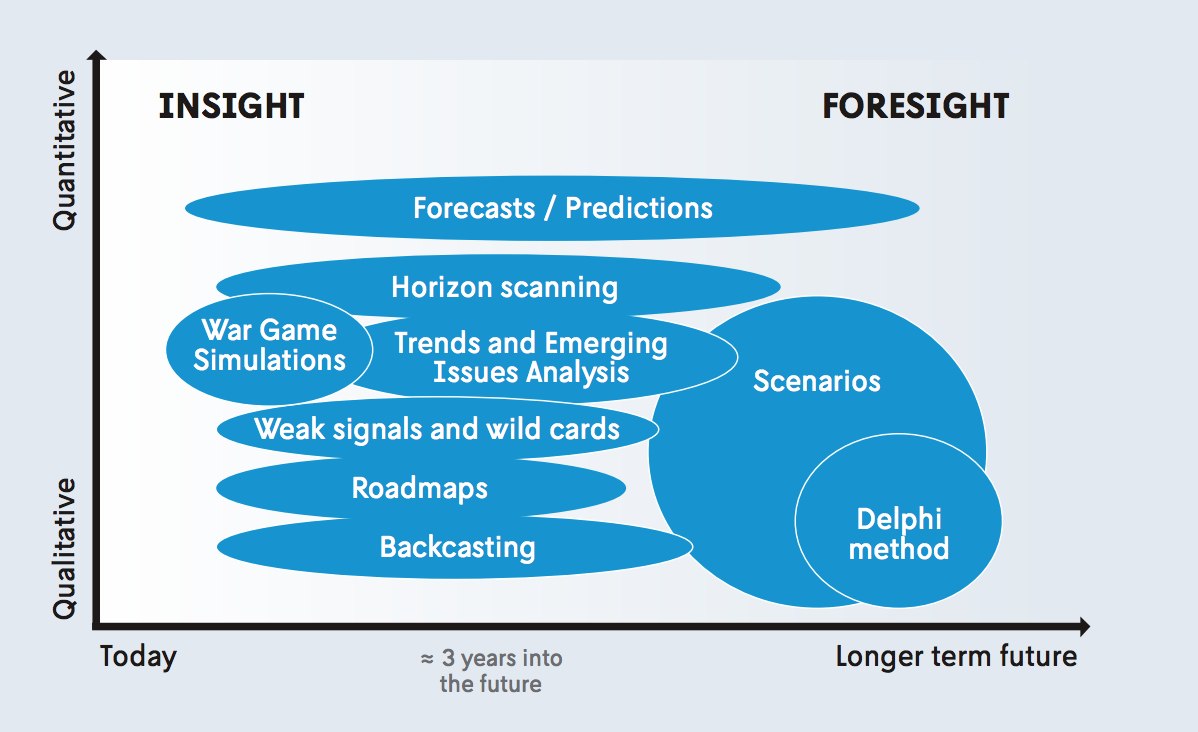Why a Government Foresight Program is Crucial for Future-Centred Policymaking
With the speed of changes the world is facing today, there is a growing urgency for governments to invest in a collaborative, systematic approach to prepare for the future.
FUTURE PROOF – BLOG BY FUTURES PLATFORM
At the 2016 World Economic Forum in Davos, Marc Benioff, founder and CEO of SalesForce, famously argued that every country should have a “minister of the future” as we are entering uncharted territory – a new world. Yet, given the short political terms, election interests, budget restraints and urgent matters that need immediate attention, it can be difficult for politicians and policymakers to focus their efforts and resources on the long-term future. Strategic foresight can help governments develop the capacity to anticipate change and future-proof policymaking processes.
WHAT ARE THE METHODS AND BENEFITS OF PRACTISING FORESIGHT IN GOVERNMENT INSTITUTIONS?
Strategic foresight has various methodologies and tools that can be adapted for collaborative and future-centred policymaking in public organizations.
For instance, the Delphi method, which involves constructing a consensus among experts following iterative rounds of questionnaires and discussions, can particularly fit within public policymaking contexts where multidisciplinary efforts are needed.
Foresight Methodologies cover different timespans and vary in terms of qualitative/quantitative nature. Source: Key Success Factors of A Foresight Program
Try our comprehensive digital foresight solution for your foresight work today, and be ready for the future. Read more about Futures Platform’s solution for the public sector.
Regular horizon scanning and strategic assessment of emerging weak signals, megatrends and risks can also assist governments in scenario building and help them turn these insights into actionable policy plans.
With its collaborative approach to holistic thinking, practising foresight in government institutions will significantly broaden governmental bodies’ horizon beyond the traditional silos.
As many of the most pressing issues of today cut across multiple administrative departments, practising collaborative foresight is crucial to future-proof policymaking processes.
Below we examine three examples of fundamental transformations that involve different governmental bodies and require collaborative policy development informed by strategic foresight:
I. Climate Change and meeting net-zero carbon goals
As a threat that has been looming over us for decades, climate change is perhaps the best example of why government foresight programs are crucial for the prosperity of future generations.
Although it is undoubtedly one of the most challenging problems with far-reaching consequences for future societies and economies, many governments are still utterly unprepared to meet the climate goals set in the Paris Agreement.
Reducing emissions and preparing for potential consequences, such as climate migration and refugees, require futures-oriented planning and collective action from several public institutions.
Moving towards an emission-free future calls for an overhaul of several industries – energy, agriculture, and urban planning, to name a few.
Having a global foresight program can help bridge the gaps between these different sectors and enable smooth collaboration for building sustainable ecosystems across industries.
II. Future Societies: New ways of living and working
There are several disruptive forces that will shape future societies and significantly alter the way we live and work.
For instance, a recent forecast states that the world is heading towards a dramatic population decline that will trigger enormous change – to the extent that we’ll have to reorganize societies.
In order to shape a prosperous future for the future generations, governments need to address the potential implications of a rapidly ageing demographic, such as the sustainability of pension systems, already today.
With the rise of the gig economy, automation, and the resulting technological employment, the future of work will also look considerably different than today.
Practising strategic foresight and mapping out the possible futures of work will help governments conceptualize how the nature of work, occupations and skills can potentially transform in the future.
For example, the Finnish government’s continuous foresight activities on the future of work allowed the country to experiment with the universal basic income policy between 2017 and 2018.
III. Technological Disruptions: Towards Data-centred Futures
The rapid digitalization of society and the advancement of artificial intelligence present governments with both unprecedented opportunities and risks.
With a government foresight program, public organizations can leverage the cutting-edge potential of emerging technologies and shape desirable futures for their citizens.
AI and digitalization can, for example, augment and increase the quality of government services through personalization, create new jobs, and assist governments towards greener futures.
However, if not adequately dealt with, the future impacts of AI and digitalization could easily be no less than disastrous – a dystopian future with unregulated surveillance and privacy-invading algorithms, cyberattacks, the increasing power of tech giants threatening democracy, and massive technological unemployment.
Thus, benefiting from emerging technologies requires smart policy decisions today.
STRATEGIC FORESIGHT IS A VITAL STEP TOWARDS PROSPEROUS FUTURES
Given the speed and increasing ambiguity of changes, lengthy policymaking processes may not always be fast enough to seize opportunities or respond to fast-developing threats.
With strategic foresight, governments will be able to build the capacity to anticipate change, have flexibility, and continuously revisit policies in an agile manner.
Moreover, embedding a future-thinking culture across all governmental organizations will encourage proactive policymaking and new, innovative ways of working.
Since the fundamental changes mapped out above are nowhere near an exhaustive list, governments need to continuously scan the horizon to identify other, less obvious weak signals that may potentially drive major future changes.





These two disciplines play distinct yet complementary roles in strategic decision-making, both essential for success in today's volatile environment.